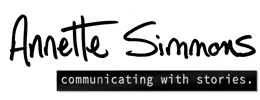Story Is Still the Foundation of Culture and Context
If formulas and machine learning could solve all of our problems, we wouldn’t need stories. Like every religion, technology delivers dogma and formulas that promise more clarity than they can deliver. Religions recruit metaphor and storytelling to make sense of ambiguities that dogma can’t condense. Technological dogma—definitions, templates, and formulas based on accuracy and consistency can’t duplicate the way moral emotions encourage us to toggle back and forth between small circle goals and big circle needs. That’s why now, just as technology fails to deliver the panacea of solutions it once promised, we discover what is missing—the emotional solidarity needed to implement big circle solutions to global problems. A decrease in the number of stories that drive emotional urges to identify when, where, and why to sacrifice selfish goals in favor of a collective goals means fewer people value the sensory cues moral emotions deliver.
From a cultural point of view, any definition of story must reflect the role stories play in creating and sustaining shared assumptions about appropriate behaviors, fair play, and important values. These are the stories that guide continuous re-discoveries of the “Big T” Truths that transcend the limitations of rational understanding. Economic logic alone will not keep golden rules of spiritual generosity alive. To rise above our selfish instincts we cultivate stories that build faith that doing good is it’s own reward. These stories reinforce good behavior so a community can maintain the fragile but functional faith that goodwill, good actions, and good intentions are worth the minor sacrifices they require. Slack off on the stories that keep these promises/morals alive, and faith begins to die.
Stories that clarify and reinforce habits of imagining long term collective benefits whenever we make important decisions build a culture with strong emotional instincts for doing good. One of my mentors, Joseph Sobol, director of the George Ewart Evans Centre for Storytelling at University of South Wales, recently shared his current working definition of story as:
“The representation and evaluation of consequential actions by sentient agents in imagined worlds.”
For those of us who want to reinforce cultural contexts that support moral behaviors, Sobol’s definition helps us pay attention to story elements that are vital. Setting out to represent “sentient agents” discourages flat emotionless characters. Working to simulate “consequential actions” ensures a storyteller can include contradictory aspects of sequential events. For instance, Little Red Riding Hood is more than a children’s story. It illustrates the point at which a seeming virtue (bravery) can lead to trusting wolves who only pretend to be kind. Sobol’s definition also includes a vital reminder that every story’s end goal is only fully realized within the imagination of our listeners. For culture keepers, Sobol’s definition helps us remember that new media, like old media, either does or does not reinforce imagined futures that correlate individual sacrifices with cultural values and payoffs.
Excerpt from Chapter 11, 3rd ed. of The Story Factor (2019) AUDIBLE VERSION HERE


